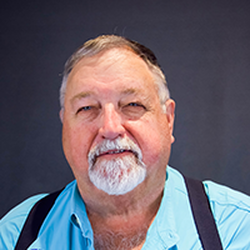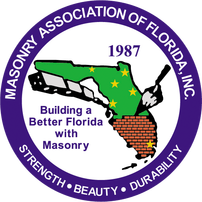|
There were provisions to use a fill material for hollow units to increase the fire resistance rating. In past, materials like zonolite (vermiculite) were used and a 6\" filled hollow unit would provide over 4 hours of fire resistance. Due to asbestos issues, vermiculite is no longer used. Is there a similar product that can be used? The fill material could be a variety of material, The key is what the CMU is manufactured with. If the 6" CMU is manufactured using sand and/or limestone aggregate you cannot reach a 4 hr equivalent rating. What you fill the cores with takes on the rating as the CMU. Full lightweight CMU with cores filled will meet a 4 hr requirement. A proper blend of sand and lightweight with filled cores may meet 4 hrs. The blend will have to be verified by an independent lab. Fill material can be practically anything that is fireproof itself. Perlite, sand, expanded clay aggregate and masonry cell fill (course or fine grout) are possibilities.
The Masonry Society has an excellent book on Fire Resistance of Masonry. Chapter 7 Section 722 covers calculated fire resistance in the IBC. I am attaching a link to the NCMA TEK that covers the same subject. FIRE RESISTANCE RATINGS OF CONCRETE MASONRY ASSEMBLIES - NCMA Thank you for contacting the MAF. Our goal is to make sure that when masonry is designed and installed correctly the public has the best wall system available. Be safe, Jerry M Painter, FASTM 352-494-8955
2 Comments
Correct code to use to certify CMU for a project designed under a previous edition of the FL Building Code. Our project calls for 2 hr rated block and was permitted under the 2010 FL Building Code. The engineer is not approving our submittal because the manufacturer is certifying the block under the 5th Edition, 2014 FL Building Code. He is saying that the block must be certified and tested under the 2010 code? What is going on? Your reviewing engineer is being a bit obsessive over a moot point. Table 721.3.2 in the 2007 FBC with 2009 revisions is EXACTLY the same table as 721.3.2 in the 2010 FBC which is EXACTLY the same table as 722.3.2 in the 5th Ed FBC which is EXACTLY the same table as 722.3.2 in the current 6th Ed FBC. And I do mean EXACTLY the same table. There have been no changes in this table for the past 30 years or more. 4 inch Eq Thickness of limestone agg gets you a 2 hour rating in 2007 and in 2019 - period, end of story. Additionally, the C140 testing procedures have remained exactly the same over the same 30+ years. The project was permitted under the 2010 FBC and thus is ALLOWED to be constructed under the requirements that governed at the time it was designed and reviewed (so you are not required to completely redesign the project under the current codes). It is my understanding that this does NOT mean that everyone supplying materials to the job have to climb into a time machine and retro backwards 10 years to resurrect and construct the job by historical - and out of date - standards.
That being said, your standards in the certification are not correct either way (neither 2010 or 2017. My view is that you should be testing and certifying your product under the current code (2017) and that the engineer of record should accept the current codes and standards governing construction in Florida. The question is moot because the governing procedures, and tables, have not changed. We are working on an existing building and need to know if the exterior 8" masonry walls are 2 hr fire rated in order to make a determination as to the Building Type. The exterior walls are covered in direct applied stucco and the interior walls are covered with gypsum drywall. Can we be reasonably sure that the walls, with stucco and drywall, meet the requirements for 2 hours?
The only way to be 100% sure is to remove 6 block intact from the structure and send them to the lab to be tested to determine that they meet the requirements of C90 and what the equivalent thickness of the units are in accordance with C140. you would also need to verify that the material used in manufacturing the units is limestone. All that being said, you can make some conservative assumptions and be relatively certain that the walls meet 2 hours using the provisions of Chapter 7 of the 2017 Florida Building Code 6th Ed., Building. Since 99.9% of all block manufactured in Florida use limestone as the main aggregate you can safely assume that the block in the building are limestone based, thus requiring a 4" equivalent thickness in accordance with Table 722.3.2. The least equivalent thickness for any block regularly produced in South Florida is 3.6 inches. An example of this would be the CEMEX T007. Thus 3.6 would be a conservative assumption for the block used in a building in SW Florida. Interpolation of the table is allowed so that 3.6" gives you 100 minutes. Thus, you are .4" and 20 minutes short of your required 2 hr rating. Section 722.3.2.1 gives you directions on how to calculate the fire rating value of finishes applied to the non fire-exposed side of the wall and Section 722.3.2.2 gives you directions on how to calculate the value of finishes on the fire-exposed side. These sections refer you to Table 722.2.1.4(1) for the non fire-exposed side and Table 722.2.1.4(2) for the fire-exposed side. If there is doubt from which side the code is requiring the rating the best thing is to calculate from both side and take the least value. Conservative assumptions on the wallboard and stucco would be 1/2" wallboard and 3/8" (.375") single coat stucco (the stucco would not be to code but would be conservative for the purpose of calculating a conservative value of the fire rating). Running the calc with the fire side assumed as the exterior you get:
|
Authors:

Categories
All
Archives
May 2024
|
Masonry Resources |
MAF Websites |
Masonry Association of Florida, Inc. |PO Box 24474 , Fort Lauderdale, FL 33307
Copyright © 2017. All Rights Reserved.
Sitemap
Sitemap

 RSS Feed
RSS Feed
